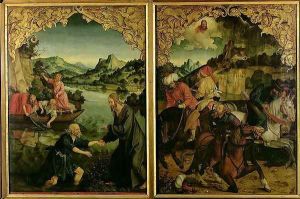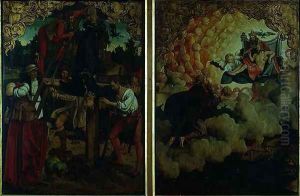Hans von Klumbach Paintings
Hans von Kulmbach, originally Hans Suess or Hans Süß, was a German Renaissance artist who was born around 1512 in Kulmbach, Bavaria, which is how he came to be known as 'von Kulmbach.' There is very little information about his early life and training, but it is widely believed that he was a pupil of the prominent Nuremberg artist Albrecht Dürer. His association with Dürer is one of the key factors that has allowed historians to piece together elements of his life and work, as the influence of Dürer’s style and technique is evident in von Kulmbach’s art.
Von Kulmbach's work consisted primarily of religious-themed paintings and woodcuts, as well as stained glass designs. He was known for his altarpieces, which were characterized by their vibrant colors and detailed figures. His most famous works include the St. Catherine Altarpiece and the St. Mary Magdalene Altarpiece. Von Kulmbach's style is noted for its combination of late Gothic and early Renaissance elements, which is typical of the art from this region during that transitional period.
Despite his talent and the quality of his work, Hans von Kulmbach did not achieve the same level of fame as his contemporary Dürer. Nevertheless, he was a respected artist in his own right and his works can be found in several churches and museums, mainly in Germany. Hans von Kulmbach died in 1572, leaving behind a legacy that has been appreciated by art historians and enthusiasts for its contribution to the German Renaissance.

